Students of the Scientific Circle for Digital Medicine and Robotics had an opportunity to present their works during the international conference: New Frontiers in Interventional Cardiology (NFIC 2022). The conference consisted of many discussion panels, lectures, and workshops which took place in ICE – Cracow Congress Center and lasted from 7.12.2022 to 9.12.2022.
Refereed papers:
Jakub Jucha , “Advanced 3D imaging and modeling techniques in structural cardiac anatomy”
Last few years have been exceptionally abundant when it comes to advancements in three-dimensional (3D) imagining and modelling. These techniques have significantly contributed to our understanding of structural cardiac anatomy, therefore allowing us to enable more precise diagnosing process and strategies of treatment.
Advanced 3D imaging techniques, such as: Computed Tomography (CT), angiography, High-Resolution MRI (HR-MRI) may help clinicians gain a better understanding towards different aspects of visualisation of the cardiac anatomy. The data gained through using these methods can be converted using various 3D modelling techniques into physical models with accurate virtual representations of the heart and correct anatomical features. These models have proven to be valuable, when considering surgical approaches and minimizing risks during an operation.
However, several challenges persist in the extensive implementation of aforementioned techniques. First of all, technological capabilities such as need for specialized software and hardware combined with always present image artifacts may not allow for such a generalized implementation. Furthermore, data integration and migration can contribute to several issues, including incompatibility between certain software platforms. In addition, current amount of qualified specialists with high enough experience to manage this type of data usage is not high enough to allow for such techniques to be performed on a daily basis.
In conclusion, advanced 3D imaging and modelling techniques provide a comprehensive and detailed representation of structural cardiac anatomy. Utilization of those methods has significant potential in broad spectrum of disorders but ultimately will vary between points of care, depending on equipment and personnel. By addressing existing challenges and promoting interdisciplinary collaboration, we can facilitate a future where these innovative techniques become routine tools in the field of cardiology.
Julianna Dąbrowa, “The spatial relationship between the mitral valve and the LCx- utility of Mixed Reality and HoloAantomy Software® Suite in interventional cardiology procedures”
Technological developments in the health sector contribute to the improvement of diagnosis, treatment, and patient care. Extended reality (XR) technologies, such as virtual reality (VR), augmented reality (AR), and mixed reality (MR), are becoming innovative tools in medical education. Incorporating these technologies into preclinical courses can contribute to a better understanding of spatial relationships between anatomical structures.
HoloAnatomy® Software Suite developed by Case Western Reserve University and Cleveland Clinic is a program based on Mixed Reality (MR) working on HoloLens 2 device. It consists of accurate, three-dimensional anatomical models with a controlled number of anatomical structures.
Particularly in preclinical training in the field of interventional cardiology, topographic knowledge of heart structures and their vascularization is essential. An example of incorporating the HoloAnatomy program into preclinical training shows the spatial relationship of the left circumflex artery (LCx) and mitral valve (MV). Knowledge of the location of those structures is crucial to avoid iatrogenic complications when performing mitral valve procedures- proximity makes LCx susceptible to injury during MV surgery. HoloAnatomy ® Software Suite creates the ability to make transparent heart walls in holograms. Thanks to this advantage it is clear that LCx arteries curve around the posterior MV annulus.
In a significant number of cases seeing simultaneously the outer and inner structures of a heart is impossible. However using advanced immersive technologies such as MR, and AR enables users to immerse in holograms and gain previously infeasible perspectives.
Paulina Więcławek, “Topographic anatomy of the thorax region in Mixed Reality”
Mixed reality, along with augmented and virtual reality, has been the object of increased interest in medical education in recent years. To achieve a stimulating learning environment, certain medical universities decided to introduce those technologies into their anatomy curriculum. This is the case of the Jagiellonian University, Medical College.
In this workshop, we decided to lead the participants through a mixed-reality anatomy lesson. The headset, equipped with the HoloAnatomy Software (R), is the same one used in anatomy classes at the Jagiellonian University Medical College. The primary focus of the lesson was the topography of the thoracic cavity. Tridimensional organs and vessels comprised in the thorax will be shown, as well as their corresponding two-dimensional radiographic images.
The primary focus of the lesson was the topography of the thoracic cavity. Tridimensional organs and vessels comprised in the thorax will be shown, as well as their corresponding two-dimensional radiographic images.
The goal of this workshop is to show the utility of introducing such technologies in our current medical education.


